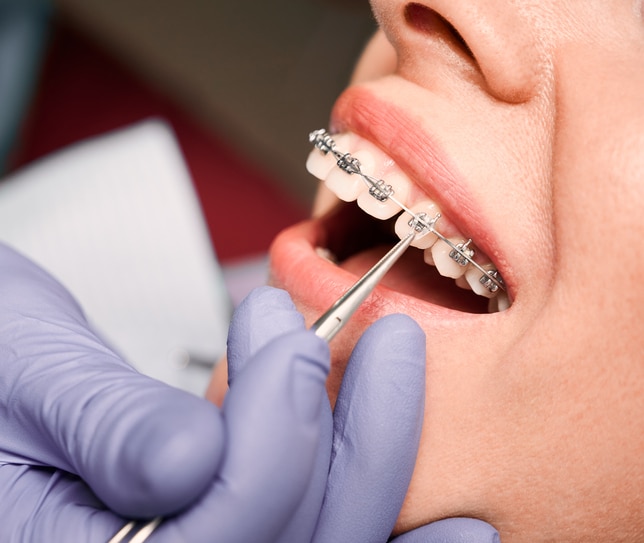Leading Tips for Selecting the most effective Cumming Orthodontist for Braces and Aligners
Wiki Article
Comprehensive Guide to Orthodontics Procedures for Remedying Dental Imbalances
Understanding the details of each procedure, including their mechanisms, advantages, and possible disadvantages, is crucial in making informed decisions concerning one's orthodontic therapy. As we navigate through the extensive guide to orthodontic treatments for dealing with oral misalignments, the detailed information of each approach will certainly unfold, shedding light on the course toward a functional and harmonious dental placement.Orthodontic Procedures Review

In addition to clear aligners and typical dental braces, orthodontists might additionally advise various other interventions like headgear, palatal expanders, or retainers to attend to details alignment issues (cumming invisalign). These treatments are customized per person's special demands and may include a combination of treatments to accomplish the desired results. Normal adjustments and tracking are crucial parts of orthodontic treatment to ensure progress gets on track and to make any required alterations in the process. By undertaking orthodontic treatments, people can not just accomplish a straighter grin however additionally boost their total dental wellness and feature.
Typical Braces: Exactly How They Function
When considering orthodontic treatments for dental imbalances, standard dental braces stick out as a reliable method for remedying teeth positioning. Traditional braces contain braces, cords, and bands that interact to use continuous pressure on the teeth, slowly relocating them into the preferred alignment. The brackets are affixed to the teeth using a special adhesive, and the cables are threaded through the brackets. By changing the stress of the wires, orthodontists can control the instructions and pressure related to each tooth, assisting them right into appropriate placement with time.
As stress is applied to the teeth via the dental braces, the bone surrounding the teeth is improved to sustain the brand-new tooth placements. People will certainly require routine modifications at the orthodontist's workplace to make sure the braces continue to apply the appropriate pressure for effective teeth movement.
Unnoticeable Aligners: Cons and pros
Invisible aligners offer a discreet and hassle-free choice to standard dental braces for remedying dental imbalances. These clear, personalized trays are virtually unseen when put on, making them an enticing choice for individuals seeking a much more visually pleasing orthodontic treatment. Among the main advantages of undetectable aligners is their removability, permitting simpler maintenance of oral hygiene compared to standard dental braces. Patients can remove the aligners before consuming or cleaning their teeth, lowering the risk of food best dentist in my area obtaining embeded the home appliance and streamlining the cleansing procedure.
Surgical Orthodontic Options
Surgical treatments in orthodontics present feasible choices for addressing complicated oral imbalances that might not be effectively solved through conventional orthodontic treatments. While invisible aligners and standard braces can deal with lots of orthodontic issues, specific situations need surgical intervention to achieve optimal results. Surgical orthodontic options are usually advised for severe malocclusions, considerable jaw disparities, and cases where the underlying bone framework needs alteration to achieve appropriate alignment.One usual medical orthodontic procedure is orthognathic surgical treatment, which includes rearranging the jaws to remedy practical issues such as difficulty speaking or eating. This surgical treatment is commonly done in partnership with an orthodontist that aids line up the teeth before and after the treatment. Surgical orthodontics may likewise involve treatments to expose affected teeth, remove excess periodontal cells, or reshape the jawbone to develop a much more unified facial account.
Prior to thinking about surgical orthodontic choices, patients go through an extensive evaluation to figure out the necessity and prospective advantages of such interventions. orthodontist. While surgical treatment may appear difficult, it can significantly enhance both the feature and looks of the smile in cases where traditional orthodontic therapies fall short
Retainers and Post-Treatment Treatment

Post-treatment care includes adhering to the orthodontist's directions vigilantly. This might consist of correct oral health practices, going to follow-up appointments, and using the retainers as recommended. Failing to abide with post-treatment treatment instructions can lead to regression, where the dentist recommendations teeth progressively return in the direction of their initial placements. Constant retainer wear, excellent oral hygiene, and routine oral examinations are important for maintaining the outcomes accomplished through orthodontic surgical treatment and guaranteeing the long-lasting security of the dealt with oral alignment.
Verdict
In verdict, orthodontic treatments provide various alternatives for dealing with oral misalignments. Typical dental braces utilize metal braces and cords to move teeth right into correct positioning. Unnoticeable aligners offer an even more very discreet option but might not appropriate for all instances. Surgical orthodontic alternatives are offered for more severe imbalances. Retainers are frequently utilized post-treatment to maintain the brand-new positioning. Overall, orthodontic treatments can efficiently boost dental wellness and aesthetic look.As we browse via the extensive overview to orthodontic procedures for dealing with dental imbalances, the intricate information of each method will unravel, losing light on the path toward a practical and unified dental positioning. - cumming braces
One of the most common orthodontic treatments is the usage of dental braces, which consist of metal braces and cords that apply gentle pressure to slowly change teeth right into the desired position.When thinking about orthodontic therapies for oral imbalances, conventional braces stand out as a tried and true approach for fixing that site teeth placing. In addition, unseen aligners may not be ideal for complex orthodontic issues that call for even more considerable teeth motion, as they are generally suggested for moderate to moderate cases. Retainers are customized orthodontic gadgets made to hold teeth in their remedied settings after the completion of orthodontic treatment.
Report this wiki page